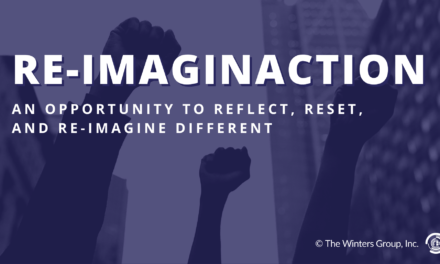
I hope the headline got your attention and I know that some of you are probably appalled that I could even suggest such a thing. Now that I have your attention, let me explain myself.
I was in a meeting with an executive diversity council yesterday where the chief diversity officer (CDO) shared the organization’s unique business case for diversity and inclusion. Having heard many similar discussions in the past with a focus on the workforce (39% of the workforce will be non-white by 2020), workplace (issues of employee engagement and retention) and marketplace (increasing diversity among customers), I asked the group if they thought these facts and figures were compelling.
There was widespread consensus among the group that even the most undisputable predictions that point to a more diverse workforce and customer base do not necessarily impact the most senior decision makers to behave differently or to change strategies or policies.
A discussion ensued with this group about the disproportionate attrition rate among a particular ethnic group. The diversity council members acknowledged that a lack of cultural competence was part of the issue. The group that was leaving in large numbers (like 90% attrition rate) felt they were not being valued for their contributions as evidenced by slight income differences among them. While the situation is a bit more complex than what I am describing, the key point is the organization’s senior HR representative’s opinion was basically, “these are our policies. We think they are fair and if they leave we will just hire more.” After more discussion, the group realized that there could be some adaptations made in the way the policies are communicated and in the recognition that employee’s receive for their contributions based on different expectations rooted in culture. The group also realized that it is not just so easy to say we will hire more because the skill set that they needed is in high demand, so if this organization wants to retain top talent, the business case is pretty clear.
This type of experience is not unusual for me which is why I asked the group if they thought the business case was compelling. I find that even with the most solid evidence there is a reluctance to adapt to the changing landscape. Many leaders do not see the burning platform to change and continue to think of diversity and inclusion as a “do good” effort.
Last year I keynoted at a conference in North Carolina and I polled the audience with this question. How many of you would say that given the business imperatives we just discussed that your organization puts a high priority on creating an inclusive culture? Of the 100 or so people in attendance, only a few raised their hands.
Based on a study conducted by Bersin by Deloitte released last April, 75 percent of respondents said their organizations aspire to be inclusive. An organization that…
“leverages the diverse backgrounds of individuals to drive value and business results by creating an environment where employees feel involved, respected, valued and connected.”
Shockingly only 11 percent of those same respondents thought that their current culture embodied the definition above.
Several years ago I interviewed a CEO of a major financial institution. This company consistently ranks among the top 50 companies for diversity and inclusion as measured by DiversityInc. His sentiment sums up why the business case is not enough to move the needle on diversity and inclusion.
“For inclusion, you have to start with the heart and then move to the head. For authentic, sustainable, inclusive organizations, leaders have to ‘get it in their guts’ and then commit to becoming competent so their behavior matches their intent.”
We need to take a page from marketing and sales strategy which tells us that all decisions are based in part on emotion. The facts alone do not persuade people to buy. There has to be some emotional connection for leaders to become advocates for diversity and inclusion. Another client of mine who called last night told me he was in a session where his CEO literally shed tears after having an emotional aha experience around diversity and inclusion. As a result, the CEO committed to a much larger budget for diversity and inclusion activities.
I don’t literally mean that you should throw away your business case analysis for diversity and inclusion. However, I think you have to combine the facts and the figures with something that will also pull at the heart strings of the decision makers (even though most leaders would deny that their decisions are rooted in emotion) and that will be something different for each one. The challenge for the CDO is to figure out what the emotional connection might be.


















